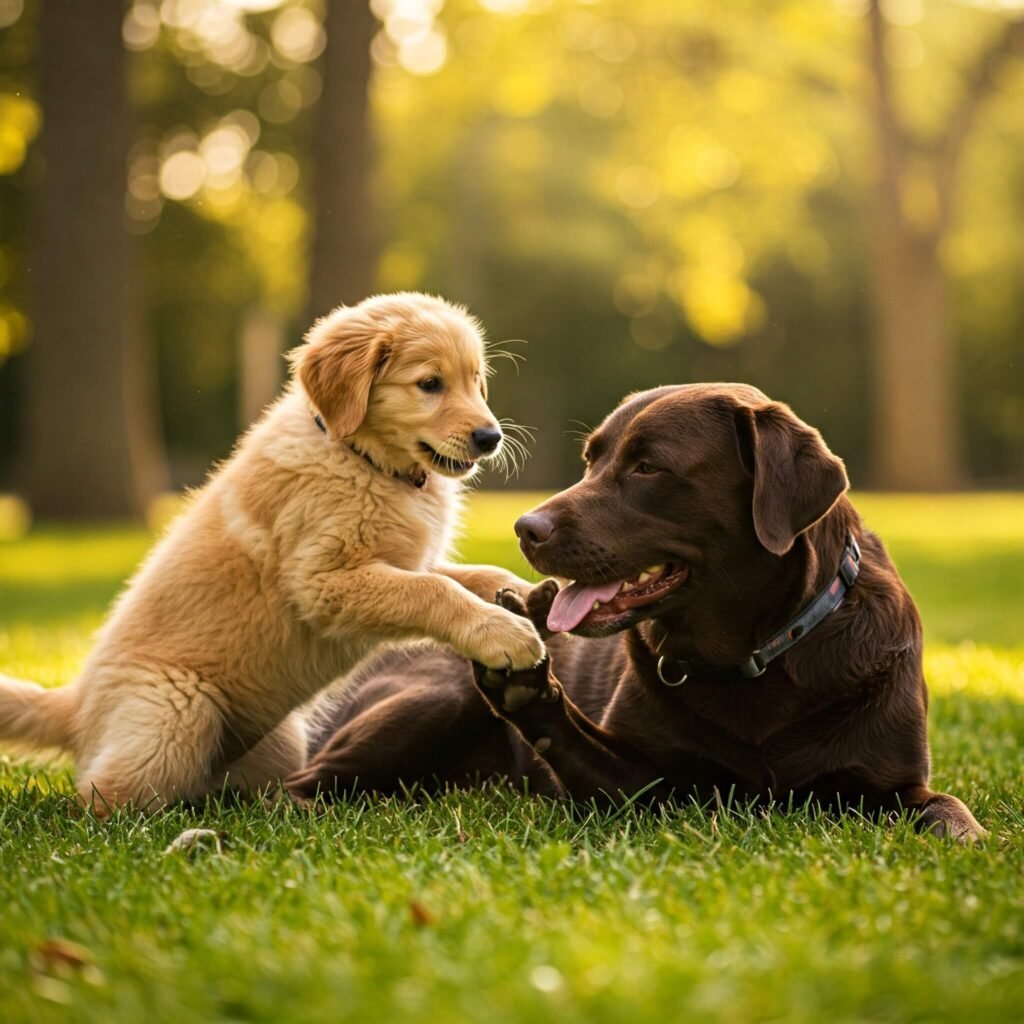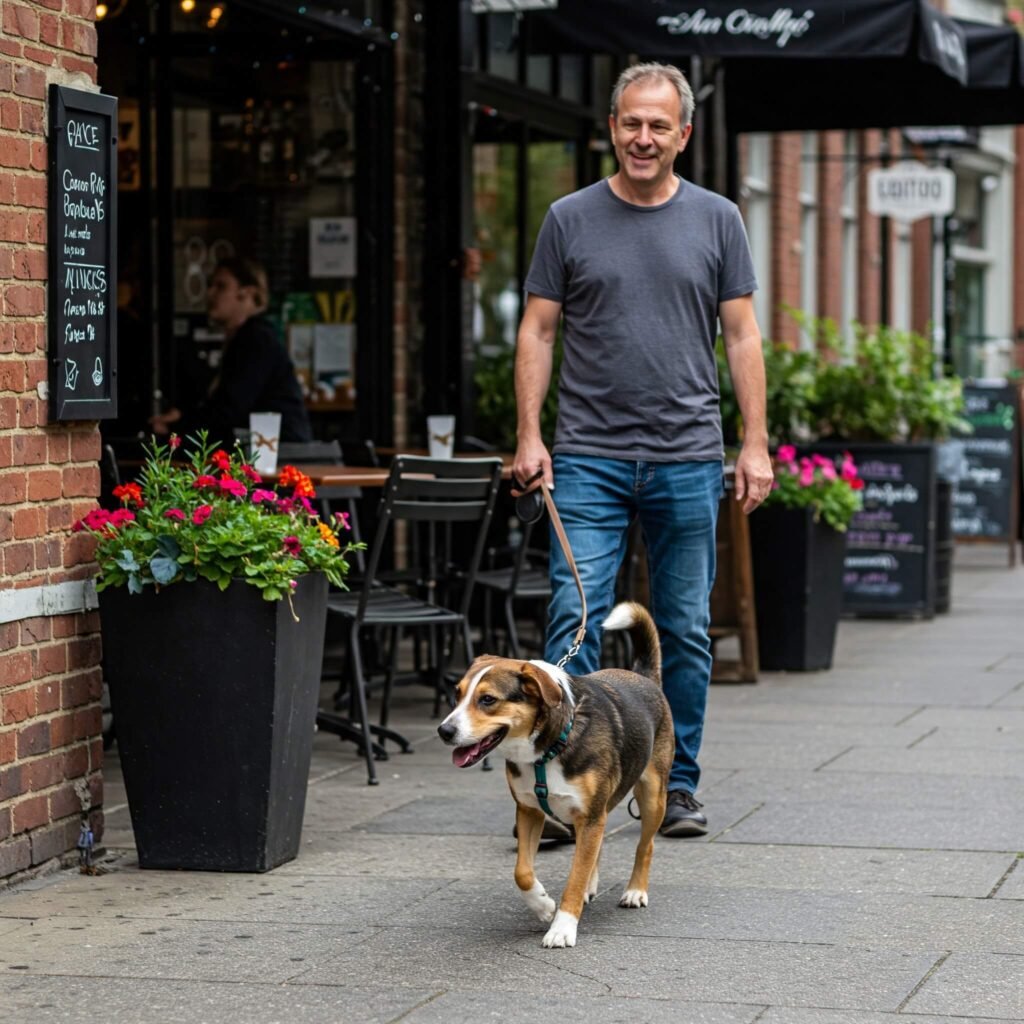Bringing a new puppy into your life is an incredibly rewarding experience. However, beyond the cuddles and playtime, lies a crucial aspect of their development: dog socialization. Properly socializing your puppy is paramount to raising a friendly, confident, and well-adjusted companion who can navigate the world with ease. This dog socialization guide will walk you through the essential steps and provide valuable insights to ensure your pup grows into a happy and secure adult dog.
The Importance of Early Social Experiences for Dogs
Early dog socialization during the critical window of 3 to 16 weeks of age has a profound impact on your puppy’s future temperament. During this time, puppies are highly receptive to new experiences. Positive interactions during this period help them learn what is safe and friendly, reducing the likelihood of fear, anxiety, and aggression later in life. Think of it as building a strong foundation of positive associations.
- Preventing Behavioral Issues: Lack of proper dog socialization can lead to fearfulness towards unfamiliar people, animals, and environments, potentially resulting in defensive behaviors.
- Building a Resilient Temperament: Positive experiences during dog socialization help your puppy develop confidence and resilience when faced with new situations.
- Enhancing Adaptability: A well-socialized dog is more likely to adapt calmly to changes in their routine or environment.
- Strengthening Your Bond: Engaging in dog socialization activities together strengthens the bond between you and your puppy.
Key Elements for Socializing Your Dog Effectively
Successful dog socialization isn’t just about exposing your puppy to everything; it’s about creating positive and controlled experiences. Here are key elements to focus on:
Gradual and Positive Introductions
Always introduce your puppy to new stimuli gradually and in a positive manner. Forceful or overwhelming experiences can be counterproductive and create negative associations. Use treats, praise, and a calm demeanor to make these encounters enjoyable.
- Meeting New People: Introduce your puppy to a variety of people of different ages, appearances (with hats, glasses, etc.), and genders. Ensure these interactions are gentle and positive.
- Interacting with Other Dogs: Expose your puppy to well-behaved, vaccinated adult dogs and puppies in a safe and controlled environment. Supervised playdates are excellent for learning canine social skills. (Outbound Link: Consider linking to the American Kennel Club’s resources on puppy playdates).
- Exploring Different Environments: Gradually introduce your puppy to different sights, sounds, and smells. This could include car rides, walks in quiet parks, and visits to pet-friendly stores.
- Getting Used to Various Sounds: Acclimate your puppy to common household noises (vacuum cleaner, doorbell) and outdoor sounds (traffic, sirens) at a low volume initially, pairing them with positive reinforcement.
The Importance of Quality Interactions
A few positive and well-managed interactions are far more beneficial than numerous overwhelming ones. Pay close attention to your puppy’s body language. If they appear stressed, fearful, or overly tired, end the interaction.
Early Experiences with Handling and Grooming
Accustom your puppy to being handled from a young age. Gently touch their paws, ears, tail, and mouth. This will make future grooming sessions and veterinary exams much easier. Pair handling with treats and praise.
Creating a Socialization Plan for Your Puppy
To ensure you cover all the bases, consider creating a dog socialization checklist. This can include:
- Meeting at least 10-20 different people.
- Interacting with at least 5-10 friendly, vaccinated dogs.
- Experiencing various surfaces (grass, concrete, carpet, tile).
- Exposure to different sounds (household noises, traffic, children playing).
- Car rides.
- Visits to a veterinarian (even for just a treat and positive interaction).
- Gentle handling of paws, ears, and mouth.

Navigating Challenges During Dog Socialization
Sometimes, despite our best efforts, challenges can arise during dog socialization. It’s important to recognize these and address them appropriately:
- Dealing with a Fearful Puppy: If your puppy shows signs of fear (cowering, tail tucked, lip licking), do not force the interaction. Instead, create distance and try again later with a less intense stimulus. Consult with a certified professional dog trainer or behaviorist for guidance. (Outbound Link: Consider linking to the Association of Professional Dog Trainers website).
- Managing an Overly Excited Puppy: While enthusiasm is good, an overly excited puppy can overwhelm others. Teach basic obedience commands like “sit” and “stay” to help manage their energy during social interactions.
- Patience is Key: Every puppy develops at their own pace. Don’t get discouraged if your puppy needs more time to adjust to new experiences. Consistency and patience are key.
Continuing Socialization Throughout Your Dog’s Life
Dog socialization isn’t a one-time event; it’s an ongoing process throughout your dog’s life. Continue to provide positive experiences and maintain their social skills as they grow into adulthood. Regular walks, visits to dog parks (if appropriate and your dog enjoys them), and continued exposure to different people and environments will help your dog remain a confident and well-behaved member of society.

Final Thoughts on Raising a Socially Adept Dog
By following this dog socialization guide, you’ll be well on your way to raising a friendly, confident, and happy canine companion who can thrive in a variety of situations. Investing time and effort in early and ongoing dog socialization is one of the best gifts you can give your furry friend.








































